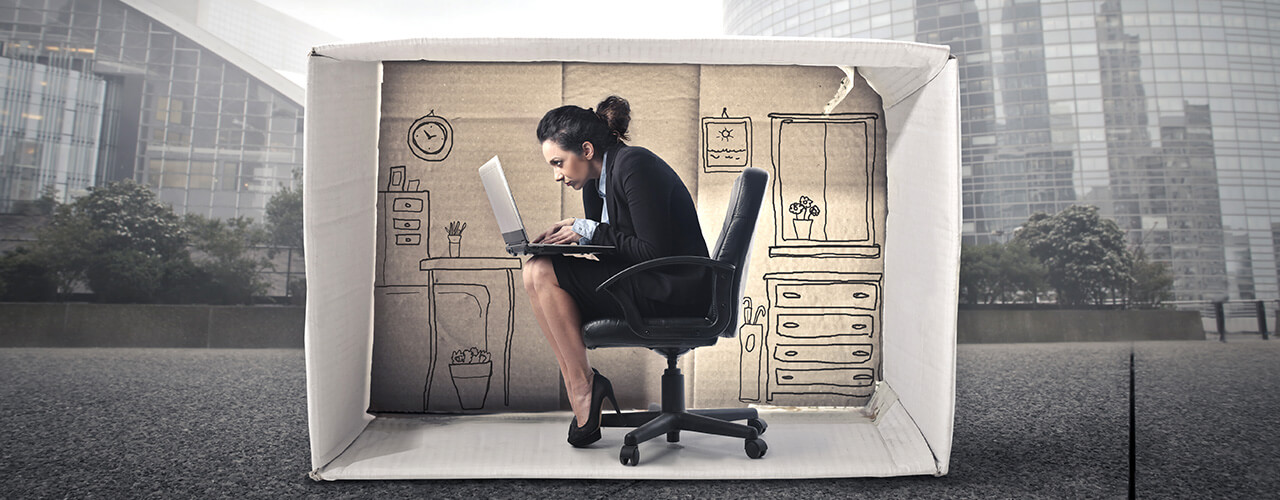In an era when fast-paced technological evolution is governing many aspects of our lives, it often seems difficult to keep up with trends. As more and more young professionals enter the workforce, the once-traditional office space is losing ground somewhat, making way for new, innovative designs and layouts, in line with the requirements of today’s employees.
Corporations and companies are working hard to meet these demands to attract and retain employees. One of the most recent prerequisites young millennials look for in a new job is workplace flexibility. They don’t want to sit in a boring cubicle all day and would much rather enjoy the freedom of working from anywhere they want because at the end of the day they still get the job done, and that’s what matters most.
Since fewer and fewer employees make use of fully-equipped offices in the traditional 9-to-5 routine, companies have begun shrinking their departments to avoid dead and empty spaces. But that’s not the only reason why offices have started shrinking.
Behind the scenes of the shrinking workplace
With so many people opting for remote working these days, employers often shrink their office spaces with the aim of cutting costs. Whilst in the 1970’s corporations usually provided between 500 and 700 square feet of office space per employee, that number is down to 200 square-feet on average and is still decreasing. Naturally, this figure also includes some space which is not specifically assigned to an employee but is still utilized by them, like conference rooms and lunch areas. After the recession, this gradual decrease was somewhat accelerated by global economic decline and the need of corporations to save money whichever way they could.
Besides cherishing their freedom, millennial workers also highly value shared spaces and communal lounges where they can exchange their knowledge and ideas in the hope of forming useful and maybe long-lasting professional relationships. This involves a different type of layout than the cubicle offices which were prominent in the ‘80s and ‘90s—these are often ditched now in order to make room for common areas, which can include nap rooms, shared kitchens and even game rooms.
The development and transformation of the technical elements which fill the office also contribute to the shrinking of workplaces. Large-monitored computers have been replaced by smaller—and, most importantly, portable—laptops. Everything we utilize these days at the workplace is more compact than it ever was in the past, occupying much less space.
Tricks to shrinking the office
Companies and employers have quite a few tricks up their sleeve to minimize their use of space and thereby lower their leasing costs. Clever, functional layouts maximizing the square footage are of paramount importance. Reception areas, lobbies, corridors, staircases, and even lavatories are also places which can be minimized. Getting desks which are a few inches smaller can similarly make a big contribution to shrinking the office space.
A few large corporations, such as the BBC headquarters in London and the Citygroup offices in Long Island City in Queens, New York, offer unassigned seats to their employees; however, the number of desks is less than the number of workers they have. Since many employees are doing fieldwork, whilst others work remotely, those who actually wish to utilize the office facilities can do so on a first-come, first-served basis. This tactic, however, does not work at all kinds of companies. If you are an employer, you would need to ask yourself whether your employees’ job descriptions permit remote work in the first place, and then do a quick survey to see whether they’d be open to such a leisurely office structure before introducing one.
Consequences of the shrinking workplace
From an employer’s point of view, a shrinking office can bring many benefits, the most important being cost reduction. Although transforming a traditional, perhaps cubicle-style, office into a modern one equipped with lively common areas might seem challenging at first, the investment is definitely worth it in the long run. Employees will be happier in a smart and compact office, as long as their personal space is somewhat respected and not completely compromised for the sake of cutting costs.
Employees might also benefit from a shrinking office space, as long as there are not too many people cramped together—a situation which could jeopardize their workflow. If the shrinking is done properly by the company, its workers should not even notice too many changes and will but simply enjoy the new design and smart use of space.
The office of the future
The office of the future might be even smaller than it is now, embracing the remote working trend by providing fewer assigned desks and more productivity-inducing shared office spaces and vibrant common areas. Luxurious grand entrances and large expanses of unused floor space are a thing of the past, with companies focusing on offering clever layouts and smart designs for their employees instead. Even if this means that offices will continue shrinking, a balance should still be kept in mind, thereby providing a welcoming and cost-effective workspace that both employer and employee will appreciate.









